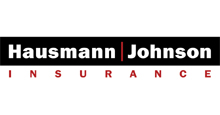by Audrey Walsh, GSP, Risk Control Consultant

Have you ever stopped to think about what might be holding back your health and safety process from eliminating hazards in a proactive and successful way?
Understanding how safety is defined has changed over time. It is ideal for an executive to believe that having no accidents (one of the top priorities) is the first priority. To state otherwise would be obscene, irrational, and unethical.
Safe means not being at risk, not the absence of accidents. Reaching a zero injury outcome is possible, but removing all risks from a setting is not. Controlling the risks is possible however, hence the creation of the
Occupational Safety and Health Act with the primary goal of reducing workplace hazards through the implementation of health and safety processes.
Unfortunately, there are 5 areas many organizations are still missing out on when working to create a successful health and safety program:
1. Top management is not visibly leading safety. Safety leadership is a vital component of any health and safety process. Exhibiting visible leadership encourages the management team to demonstrate their commitment to safety by attending safety meetings, taking ownership of the safety management system, being involved in quarterly reviews and training, and having two-way dialogues about safety with all employees.
2. Safety not being integrated into the fabric of the organization. Safety must be
the way, not the priority or goal. Simply stating “safety should become a value” is true, but self-limiting. The most basic priority of any organization is to have enough revenue to keep the lights on and doors open. Safety needs to be just as vital.
3. Not setting clear expectations or holding employees proactively accountable for safety performance, which is different than safety results. Unfortunately, many companies reactively hold their employees accountable for the safety results.
“We didn’t meet our goal for the quarter, so who needs to be held accountable?” We must ensure we are proactively reviewing what safety performance is expected prior to reviewing the results to ensure the proper resources and training is allocated.
4. Not utilizing leading indicators. In order to obtain an outstanding safety record, a systematic method must be used to measure what’s going on throughout your entire safety operation. This will allow employees to quickly and easily understand why something went wrong. Leading indicators can provide insight so that the organization can predict what could happen to avoid incidents from occurring. Leading indicators can include measures such as frequency of safety training, safety audits and inspections, time to complete corrective actions, employee involvement in proactive activities, and even leadership involvement.
5. Frequent/regular safety training and discussions are not taking place. As an organization we must recognize the importance of continuous education of our employees. According to OSHA, safety training provides managers, supervisors, and employees with the knowledge of proper practices to do their job safely, awareness of how to eliminate hazards to reduce risk, and specialization when their specific roles require unique preparation. However, one issue that employers face when looking to implement frequent/regular safety training is that the training sessions can be long and boring. When’s the last time you remember seeing an employee get excited about a safety training session? Here is a solution to help you keep training engaging, fun and effective for all: keep your content high energy and use storytelling to connect with your audience.
Safety is defined by what we do, not by the result. How we convey our feelings and what we say has a greater influence on others than we may think. If we expect employees to increase their knowledge in a health & safety program, all executives, managers, and supervisors need to start with themselves by asking,
“Do we know what safety is, and do we really believe safety is first?”
If you would like help evaluating your current health and safety program, watch our webinar:
Evaluating the Effectiveness of Your Safety Process.


 This post is locked to comments.
This post is locked to comments.
